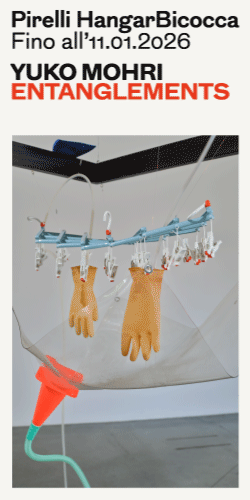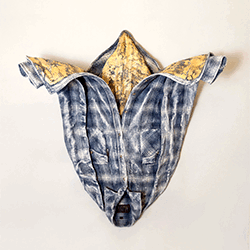[nemus_slider id=”43747″]
Danish artist FOS’ work brings together elements of sculpture, architecture, design and installation, often including performative aspects. Departing from the key assumption that aesthetics and sociality are inextricably intertwined, his aesthetic is informed by a philosophy he refers to as Social Design, a notion that reflects his vision of creating multifunctional social spaces and environments for social interaction and stimulate heightened communication among individuals.
Rebecca Gremmo talk to FOS about Koøje, his latest exhibition and most comprehensive show to date, which opened at the Kunsthal Charlottenborg in Copenhagen on 20 March and just closed on 17 May 2015. The exhibition coincided with the publication of the book One Language Traveller. Published by InOtherWords, the book will launch in London on 20 May 2015 (@Donlon Books, 75 Broadway Market, 7-9.30pm)
Rebecca Gremmo: To start, I’d like to talk about the exhibition’s title, Koøje, which mean porthole in English. Can you tell me more about this title, and why you chose it?
FOS: A porthole is a small window of a ship, but in Danish it also mean the eye of a cow. A ship is a man made construction, a vessel in the vast, uncontrollable space that is the sea. The vessel for me is an analogy for our collective memory, and its cargo a collection of the values, rituals, language, and traditions, by which we define ourselves. I see our common memory as figure existing in two states: one the one hand, it is solid idea that we protect by all means, including war; on the other hand, it is a liquified idea, something like a caricature drawing that simultaneously depicts and distorts a situation. The exhibition is about this idea of our collective memory.
RG: When approaching the Charlottenborg, we are greeted by a neon sign declaring Your Success is Your Amnesia. The notion of memory – and its loss – is a leitmotiv in the exhibition. Can you tell me more about your conception of memory, and how you address it in the installation?
F: This neon sign marks the beginning of the exhibition, and introduces the subject of collective amnesia. For me, amnesia is essential for our survival as humans. To achieve success, we (as a collective) need to forget, suppress and move on. But this path can be a slippery one.
RG: Can you tell me more about your interest in the collective?
F: I see collective memory as an important part of our collective blueprint. For instance, for how we can stand together in support of a national football team, or religion, or paranoia. I also see the figure of the collective memory as having the ability to absorb feelings, like fear or guilt. This can allow to overcome trauma and move on, as it happened in Germany, for example. In the exhibition, I am addressing this figure of memory because I see a change in how the collective is defined: from a material process determined by the physical spaces of social structures, to an immaterial one driven by the electric force of the social media. In this way, we now share a collective double space. I want to ask, how does this new space create the collective memory?
RG: So this collective space is the place where the social and the physical world meet – where the rules and structures through which we understand the world manifest themselves. How did you relate to the physical space of the Charlottenborg, and structure the exhibition as a space for social activity?
F: The Charlottenborg is a large structure, made up of many large individual spaces. In each of these spaces, I tried to work around different themes. The first room is the most ethereal, light space, divided up into smaller sections using transparent fabrics, in which I placed various smaller and larger objects addressing ideas of transparency, community, and memory. The first work one encounters is a large metal tunnel, with a blind door at end. This is a replica of an entrance from a community of Preppers, who learn skills like shooting, eating bark and collecting berries, preparing to survive the end of civilisation. These people, waiting in groups for the final collapse, inspire an image of man that is bare of all institutional structures, existing outside of the collective memory.
Moving on in the exhibition, the objects become more specifically about the collapse of structures, terminating with the vision of a utopian landscape in the form of an architectural model placed on a large chalk rock. The journey through the exhibition also gets increasingly darker in a physical sense, by the use of light.
RG: This was your most comprehensive exhibition to date, including both existing and new works. How did you go about selecting the works? And which did you produce specifically for the exhibition?
F: I think if one placed all the works in a large pot, the fumes would be very much about the topic of the porthole. So a lot of older works fitted in. Besides one room of older works, in all the other spaces I placed new works and installations, with one exception. This was a replica of a show I did in 2002 in the London gallery VTO (now Union Gallery), for which I built a stage for lectures and concerts; the actual exhibition was space as it was left after these events. I recreated this space, with a programme of talks, performances and concerts developed in connection with the Royal Academy of Art in Copenhagen,
RG: I was struck by the quantity of text present in the exhibition. Language, intended as system of sounds and words but also referring to the forms and objects that we create, often comes up in your work. Can you say more about your use of language and text in Koøje?
F: Text has always been an important part of my work, with press releases or wall texts often functioning as engines for my shows.In Koøje I wanted to use texts as titles or directions for each work, and the exhibition itself starts with a text. Some of the texts in the exhibition are also repeated in the book One Language Traveller. Language is an form maker, and being and artist, I am interested in forms.
RG: What’s next for you?
F: I am making a square, also titled Your Success is Your Amnesia, for a large school in Copenhagen. I will participate to Performa later this year, in collaboration with Jesper Just, a video artist and friend. The release of the music album Small White Man. A holiday!












